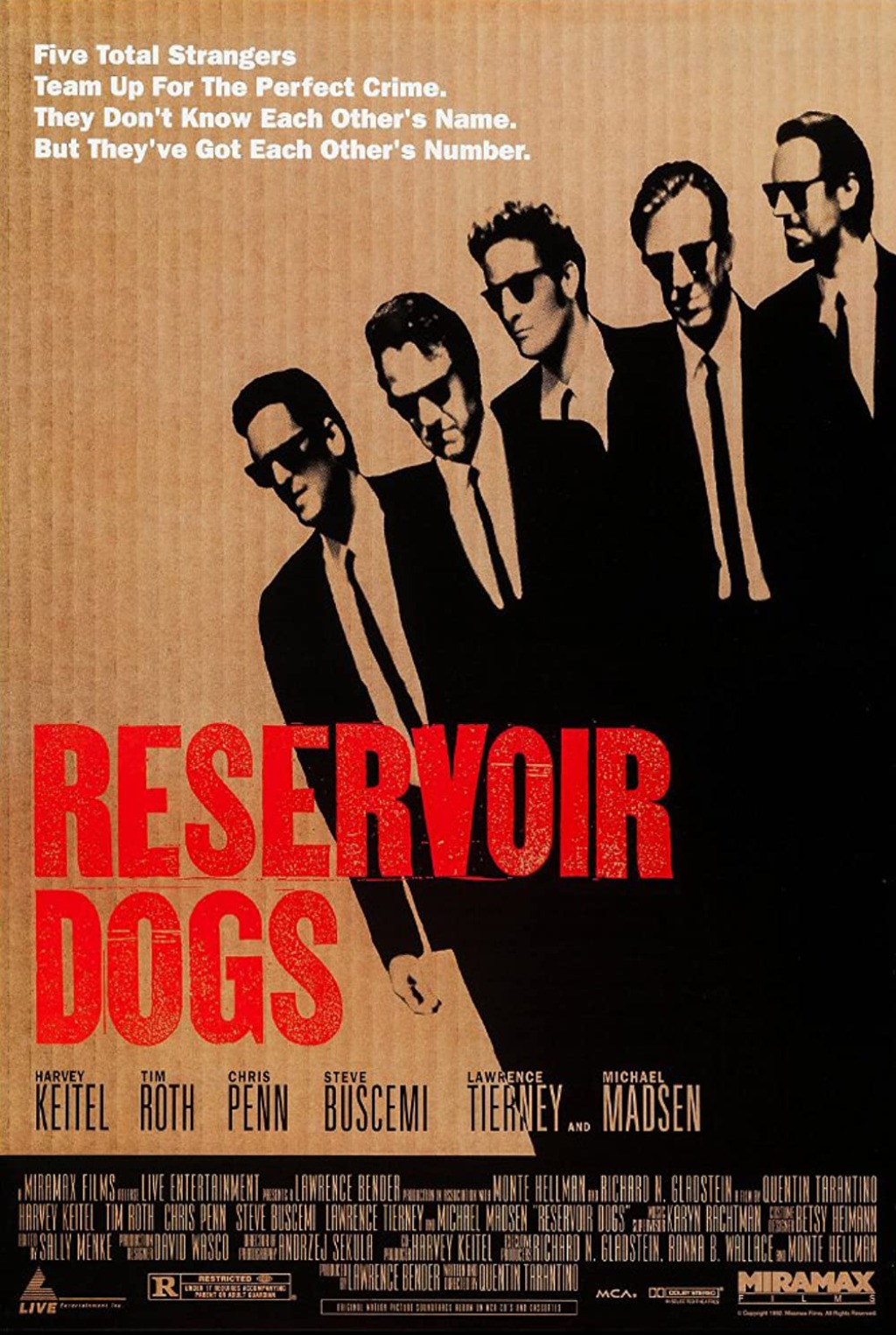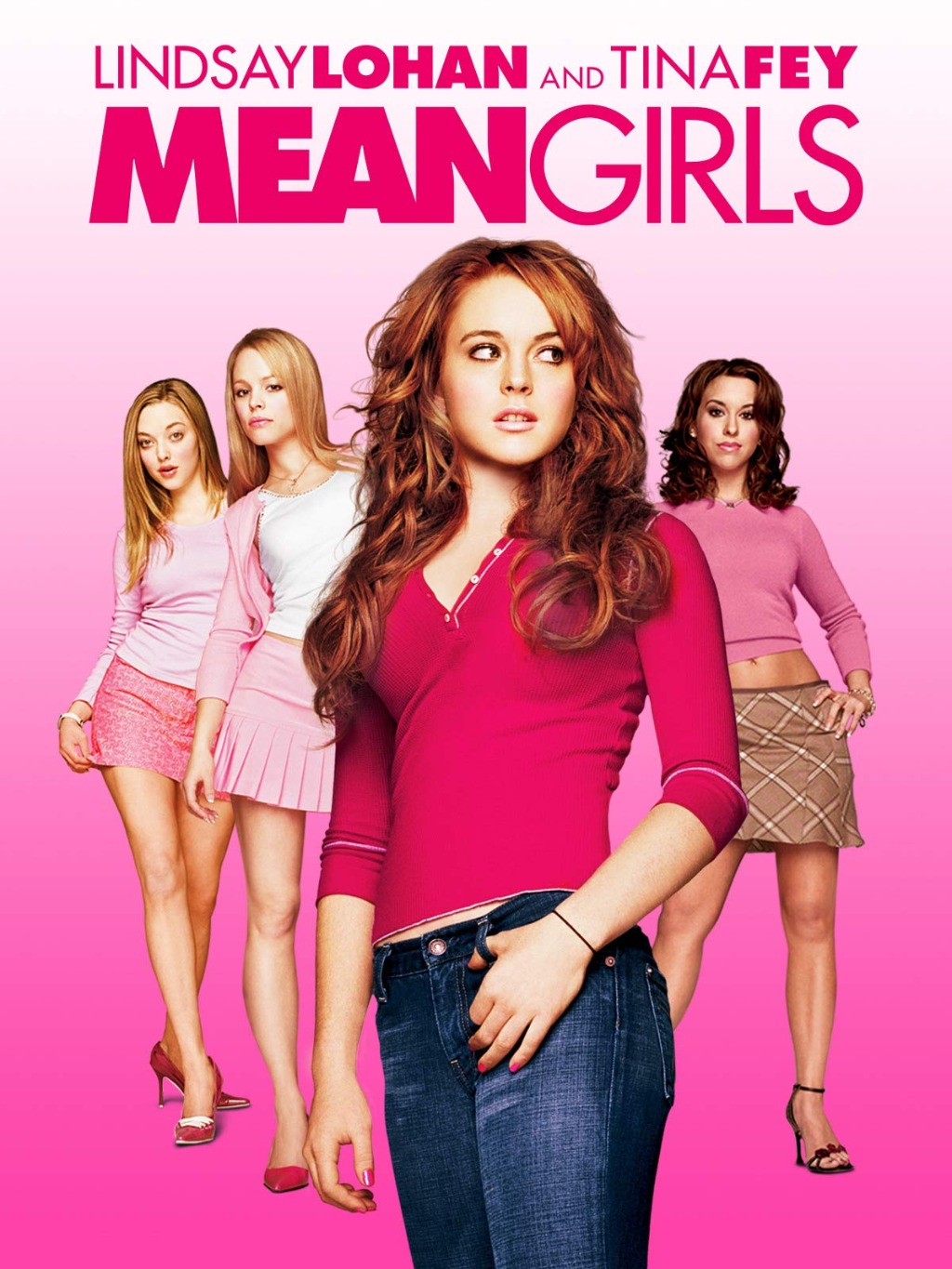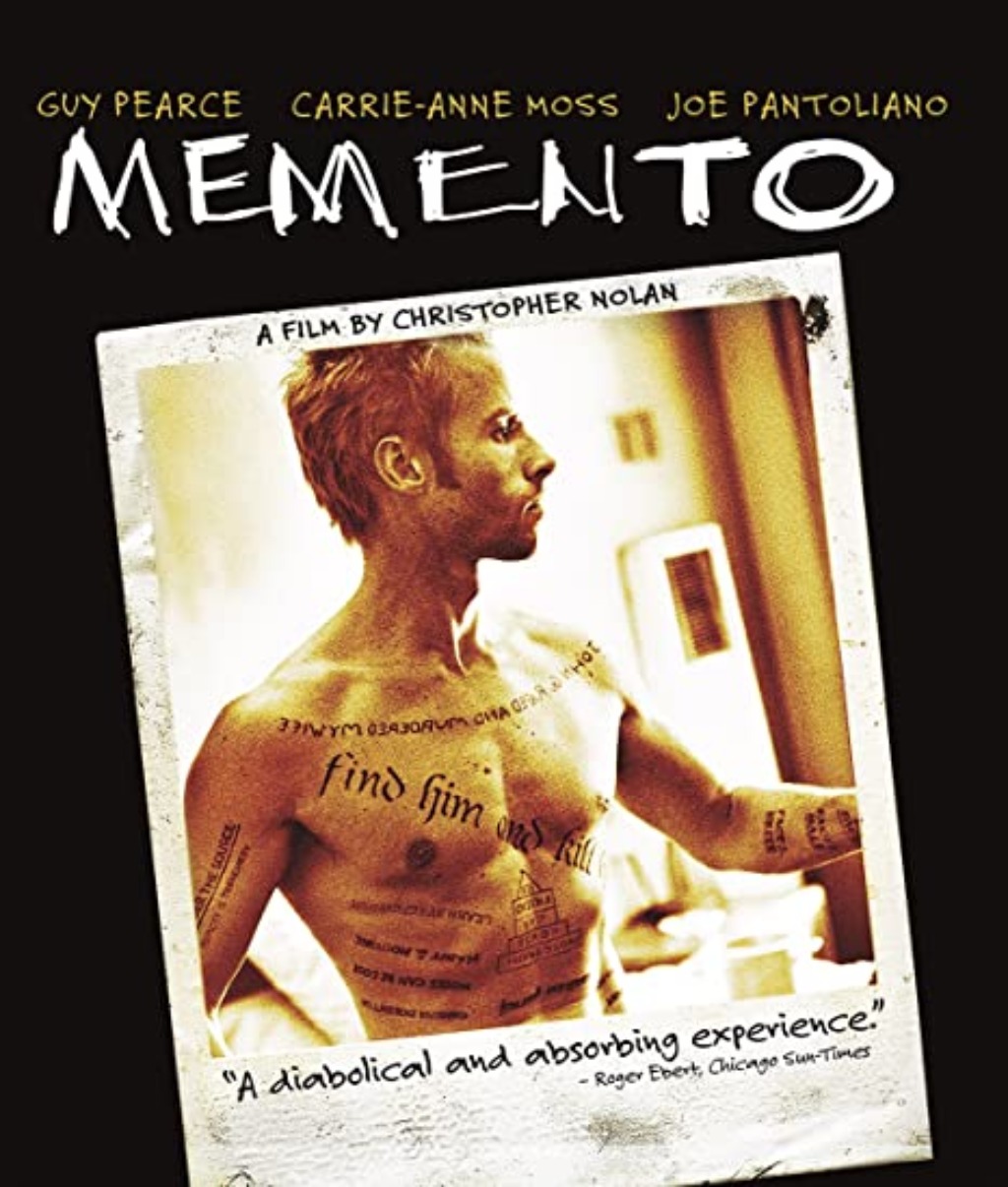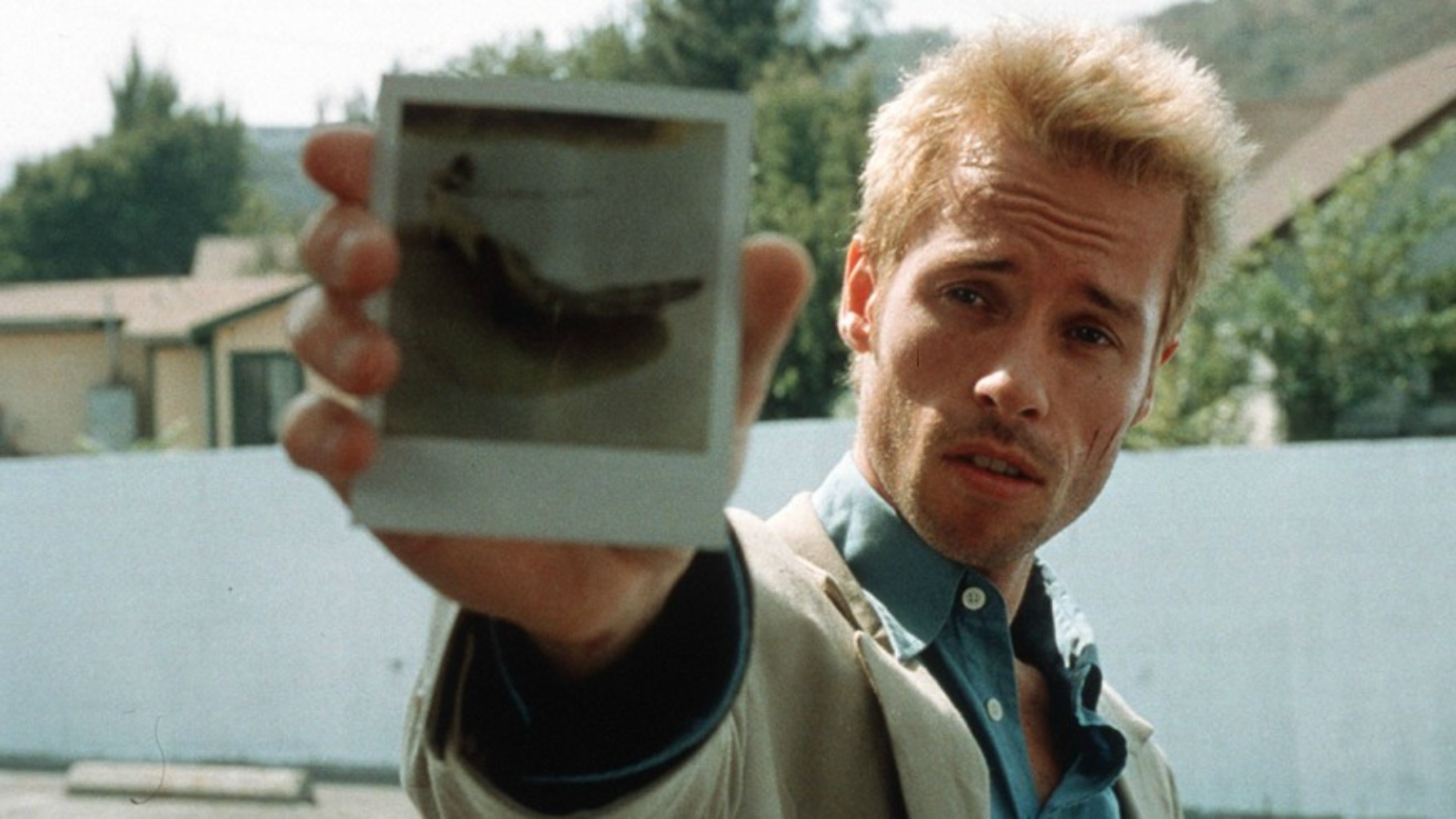Last week I posted the third installment in my series on TV shows you can watch to improve your writing. Which means that this week it’s time to discuss another handful of movies. I have already written two installments on movies you can study to improve your writing, as well as bonus posts about holiday and fairy tale movies (check out our winners of the fairy tale retellings contest, by the way!). TV shows are great to watch if you’re writing a series, but if you’re writing a standalone novel, a movie is really closer in structure.
Here are a few more movies you can watch to help improve your writing.

Dialogue: Reservoir Dogs
Where to watch it: HBO Max
These days everyone knows Quentin Tarantino. Even if you haven’t seen his films, you know that they are synonymous with two things—grisly violence and fantastic dialogue. He is one of my favorite directors. I already included his film Pulp Fiction in the first “movies” installment of this series. I love the Kill Bill films as well and think a writer could learn a great deal by delving into Tarantino’s full filmography.
But Reservoir Dogs may be my favorite Tarantino film. Nobody knew who he was back in 1992 when the film came out—it was his first big movie. He wrote, directed, and acted in the film, delivering the now infamous “Like a Virgin” monologue at the start of the movie. This is the film that put Tarantino on the map, with him directing the much-celebrated Pulp Fiction next.
His films are known for their violence but the characters spend most of Reservoir Dogs in a barren warehouse simply talking to one another. We are given next to no background on this cast of characters. We never even learn most of their real names. Instead, they go by codenames like “Mr. White” and “Mr. Pink”. It is only by the strength of their dialogue that we care about what happens to these people.

After the initial scene of a group of criminals hanging out in a diner before a robbery, we skip to after the job when Mr. White brings injured Mr. Orange to the warehouse. It is up to the audience to put together what actually happened during the job as the characters discuss what went wrong. The movie is like a play—wall-to-wall dialogue with very little action.
This is a great film to study how a piece of dialogue can reveal a great deal about a character. For example, Mr. Pink’s speech about how he doesn’t tip at the diner shows that he is the sort of character that puts himself first before others. This is one that I would also highly recommend reading the screenplay so you can pick up on little things about the dialogue that you may have missed watching the movie.

Character Development: Mean Girls
Where to watch it: Pluto TV
In 2004, Tina Fey was dominantly known as the head writer and cast member on Saturday Night Live. But then Mean Girls was released and showed off her talent as a screenwriter. She plays a small role in the film as well. Mean Girls is loosely based on the 2002 non-fiction self-help book Queen Bees and Wannabes by Rosalind Wiseman, which discusses female high school social cliques, bullying, and how it can affect students. Fey also says she drew inspiration from her own time in high school.
While it has razor-sharp dialogue and a quick pace, what really brings Mean Girls to life is its characters. It would be easy for these characters to seem like cliches, but a combination of strong writing and acting makes the cast seem like real people.
The movie begins by showing protagonist Cady’s parents giving her her lunch and trying their best to prepare her for her first day of school. The joke is that they’re speaking as though Cady is a small child, rather than the sixteen-year-old she is revealed to be. In less than a minute, Cady is developed as a sheltered teen with overly attentive parents who has never been to a real school before.

Mean Girls is full of little moments that reveal a lot about a character. At one point Queen Bee Regina compliments Cady on a bracelet she got in Africa, saying, “Oh my God, I love your bracelet. Where did you get it?” Cady later hears her use almost the exact same words to compliment another student’s skirt, only to turn around and tell Cady that it’s “the ugliest effing skirt” she’s ever seen. This moment shows how incredibly disingenuous Regina is.
This film is a lot of fun to watch just for the laughs. But you can learn a great deal about how to develop your characters concisely and make them seem like real people instead of simply cardboard cutouts.

Using an Inventive Structure: Memento
Where to watch it: HBO Max
Similar to the way Reservoir Dogs was Quentin Tarantino’s breakthrough movie, in 2000 Memento was the film that got everyone excited about Christopher Nolan. He is another favorite director of mine. In this series’ second “movies” installment, we discussed how The Dark Knight starts off with a bang. Inception is a great film to watch to study worldbuilding, and The Prestige features a fantastic rivalry between its two main characters.
But just as Reservoir Dogs is my favorite Tarantino movie, Memento may be my favorite Nolan film. In a previous installment, we discussed how both Pulp Fiction and 500 Days of Summer jump around in time to tell their stories in a more interesting way. Memento takes achronological storytelling and puts it on steroids. Apart from a handful of chronological segments in black and white, the entire film is backwards. It starts at the end and ends at the beginning with a series of scenes telling the story in reverse order.
This may just seem like a gimmick but there is actually a very good reason for this mode of presenting the story. The film’s protagonist, Leonard, is an ex-insurance investigator who suffers from anterograde amnesia and can no longer build new memories. So putting the film in this format forces the audience to experience living like Leonard: just one sliver of life at a time.

The film opens with Leonard shaking out a Polaroid photograph. But instead of becoming clearer, the image—a man shot dead—becomes more and more indistinct. This is a creative way of introducing the film’s backwards structure. Then Leonard feeds the photo back into the camera and snaps the picture. Next, we see him kill the man in reverse. After that, we move into the black and white storyline where Leonard is talking on the phone to someone about his ailment. Then we move to the color scene that immediately precedes the opening scene. Moving back and forth between these two storylines helps to keep the story moving without things getting too confusing.
This is a great movie to watch if you’re trying to think outside the box and present your narrative in a more inventive way. You can always just move from beginning to middle to end but films like Memento show that there are lots of imaginative modes of storytelling out there.
It is important as a writer to never stop learning. No matter how great you are at your craft, you can always get better. Taking classes and seminars can be deeply helpful, but studying your favorite films to see what they’ve done right can be a much more enjoyable way to study. That way you can have a fun movie marathon and learn something new at the same time.
Follow us on Facebook | Instagram | Twitter | Discord